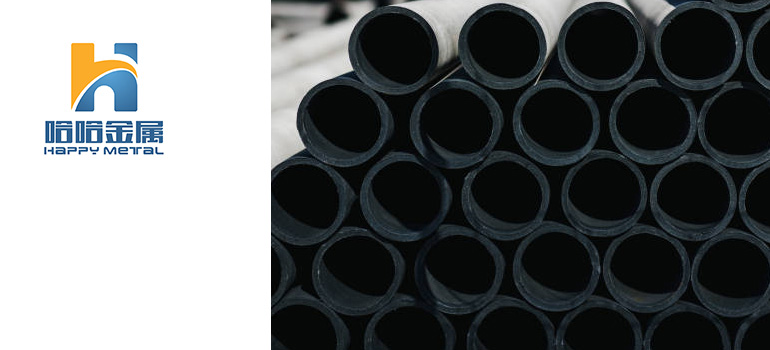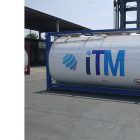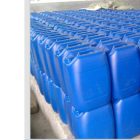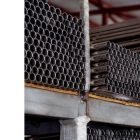Summary:
How to Prevent Carbon Steel Pipe Corrosion: Expert Tips and Techniques?
What is Carbon Steel Pipe Corrosion?
How Corrosion Affects the Structural Integrity of Carbon Steel Pipes?
Effective Methods to Prevent Carbon Steel Pipe Corrosion
How Environmental Factors Contribute to Carbon Steel Pipe Corrosion?
Carbon steel pipe corrosion is a common issue faced in many industries, particularly in sectors like oil and gas, chemical processing, and water treatment. Understanding the underlying causes, types, and impacts of carbon steel pipe corrosion is crucial for taking effective preventive and corrective actions. In this section, we will explore what carbon steel pipe corrosion is, how it occurs, and its potential effects on piping systems.
What is Carbon Steel Pipe Corrosion?
Simply put, carbon steel pipe corrosion is the process where a metal surface reacts chemically with its environment, leading to the degradation or damage of the metal. Carbon steel, commonly used in piping systems, is an alloy that lacks high corrosion resistance, making it susceptible to deterioration when exposed to moisture, oxygen, or chemicals. This corrosion process not only damages the pipe but can also lead to serious issues like leaks, system failures, and costly repairs. In industries where pipelines are critical for operations, understanding corrosion is key to maintaining safety and efficiency.
Common Causes of Carbon Steel Pipe Corrosion
The causes of carbon steel pipe corrosion can vary, but the main factors include:
Moisture and Oxygen: When water and oxygen are present, oxidation reactions accelerate, causing corrosion. In moist or underground environments, corrosion is typically more aggressive, as the metal is constantly exposed to water and oxygen.
Exposure to Chemicals: Acidic or alkaline substances can have a strong corrosive effect on carbon steel, especially in industrial settings where pipes are constantly exposed to aggressive chemicals or corrosive fluids.
Electrochemical Reactions: Corrosion often occurs due to electrochemical reactions between the carbon steel pipe and surrounding metals or soil. These reactions can lead to localized corrosion, such as pitting or crevice corrosion.
High Temperatures: Corrosion is also expedited in high-temperature environments. In industries like oil and gas, fluctuating temperatures can accelerate the corrosion process, increasing the risk of pipe failure.
How Corrosion Affects the Structural Integrity of Carbon Steel Pipes
As corrosion progresses, the structural integrity of carbon steel pipes deteriorates. One of the primary effects is the thinning of the pipe walls, which directly impacts the strength and load-bearing capacity of the pipe. When the wall thickness is reduced to a critical level, the pipe may fail, resulting in cracks or leaks. In high-pressure systems or pipelines carrying hazardous materials, corrosion can lead to catastrophic failures, posing safety risks, environmental damage, and even production downtime.
In addition to structural damage, corrosion can also increase surface roughness within the pipe, which disrupts the flow of fluids. This can lead to decreased system efficiency, higher energy consumption, and potential flow blockages. Furthermore, repairing or replacing corroded pipes can be expensive and time-consuming, driving up operational costs for businesses.
Thus, understanding the causes and consequences of carbon steel pipe corrosion is essential for implementing effective preventative measures. By monitoring the condition of pipes and applying proper protective strategies, the impact of corrosion can be minimized, and the lifespan of the piping system can be significantly extended.
Effective Methods to Prevent Carbon Steel Pipe Corrosion
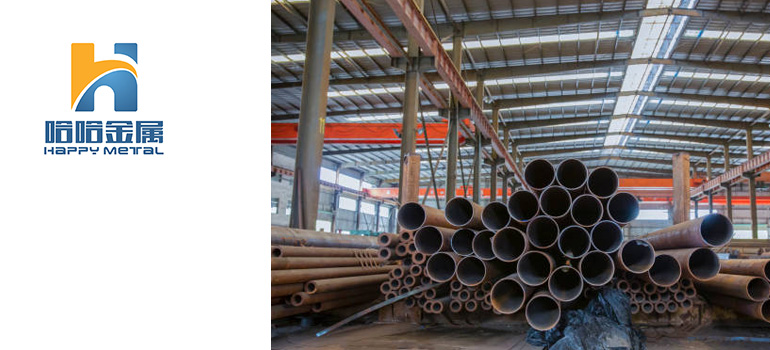
Preventing corrosion in carbon steel pipes is crucial for maintaining the longevity and efficiency of industrial piping systems. Several effective methods can be employed to mitigate corrosion risks, whether through protective coatings, cathodic protection, or proper design. In this section, we will explore these strategies and provide practical tips for preventing carbon steel pipe corrosion.
Coatings and Linings for Carbon Steel Pipes
One of the most common methods to protect carbon steel pipes from corrosion is the application of protective coatings and linings. These coatings act as a barrier between the metal surface and the corrosive elements in the environment, such as moisture, chemicals, and oxygen.
Epoxy Coatings: Epoxy-based coatings are widely used for their excellent adhesion properties and resistance to chemicals and moisture. These coatings provide a durable, long-lasting protective layer that prevents water and oxygen from reaching the steel surface, significantly reducing the risk of corrosion.
Polyethylene and Polypropylene Linings: These types of plastic linings are commonly used for pipes carrying aggressive fluids. They offer excellent protection against chemical corrosion and are particularly effective in preventing damage caused by acidic or alkaline environments.
Fusion Bonded Epoxy: This is another popular choice for industrial pipes. The fusion-bonded epoxy coating is applied to the steel surface and then cured at high temperatures, forming a strong, uniform layer that provides superior protection against corrosion, particularly in water and wastewater pipelines.
Cathodic Protection Systems
Cathodic protection (CP) is an electrochemical method that involves applying an electrical current to the pipeline to reduce the effect of corrosion. This technique is highly effective in preventing corrosion in buried or submerged carbon steel pipes, where external corrosion is a major concern.
Sacrificial Anode System: In this method, a more electrochemically active metal (such as zinc or magnesium) is attached to the pipeline. This metal corrodes instead of the carbon steel pipe, thus “sacrificing” itself to protect the pipe. This system is commonly used for pipelines that are exposed to soil or water.
Impressed Current Cathodic Protection (ICCP): In ICCP, an external power source is used to supply a continuous current to the pipeline. This current helps counteract the natural electrochemical reactions that cause corrosion. ICCP systems are ideal for large-scale pipelines and can provide long-term, reliable protection.
Proper Pipe Installation and Design to Minimize Corrosion Risk
The installation and design of carbon steel pipes can have a significant impact on the likelihood of corrosion. By carefully considering these factors, you can reduce the risk of corrosion in the first place.
Avoiding Water Traps: During installation, it’s important to avoid creating low spots or water traps in the pipeline, where moisture can accumulate and accelerate the corrosion process. Proper pipe sloping and drainage systems can help prevent stagnant water from forming, especially in horizontal pipelines.
Using Corrosion-Resistant Materials: Where applicable, it may be beneficial to use corrosion-resistant materials, such as stainless steel or alloys, for parts of the piping system that are more prone to corrosion. This is especially important in areas with extreme environmental conditions or high exposure to corrosive substances.
Minimizing the Use of Welds: Welds are more susceptible to corrosion than the surrounding base metal due to changes in the material’s properties at the welded joint. Minimizing the number of welds, and ensuring proper welding techniques, can help reduce localized corrosion in these areas.
Regular Maintenance and Monitoring
Even with preventive measures in place, regular maintenance and monitoring are essential for ensuring the ongoing protection of carbon steel pipes. This includes visual inspections, testing, and using advanced monitoring technology to detect early signs of corrosion.
Routine Inspections: Performing regular inspections of pipelines can help identify corrosion at its earliest stages. Visual checks for rust, discoloration, or leaks can provide important clues that corrosion is taking place. In critical applications, more advanced inspection methods, such as ultrasonic testing, may be necessary.
Corrosion Monitoring Systems: Advanced corrosion monitoring systems, such as corrosion probes and sensors, can be installed along the pipeline to provide real-time data on the condition of the steel. These devices can detect changes in the pipe’s thickness, allowing for early intervention before corrosion causes significant damage.
Maintenance Schedules: Implementing a proactive maintenance schedule ensures that pipes are cleaned, repaired, or re-coated when necessary. Regularly scheduled maintenance can help maintain the integrity of the piping system and prolong its service life.
By implementing these effective methods to prevent carbon steel pipe corrosion, industries can extend the lifespan of their piping systems, reduce maintenance costs, and prevent costly failures. Coatings, cathodic protection, proper installation practices, and regular monitoring are all key components of an effective corrosion management strategy. Addressing corrosion proactively will not only safeguard the integrity of the pipes but also contribute to the overall safety and efficiency of the operation.
How Environmental Factors Contribute to Carbon Steel Pipe Corrosion
Environmental factors play a critical role in the rate and extent of corrosion in carbon steel pipes. Since carbon steel is naturally more susceptible to corrosion than other materials, its exposure to specific environmental conditions can accelerate the degradation process. In this section, we will explore the primary environmental factors that contribute to carbon steel pipe corrosion and how they impact the integrity of piping systems.
The Role of Moisture and Oxygen in Corrosion
Moisture and oxygen are two of the most significant contributors to the corrosion of carbon steel pipes. When these elements come into contact with the steel surface, they trigger an electrochemical reaction that results in oxidation, commonly known as rusting. This process gradually weakens the pipe, causing it to lose strength and durability.
Water Exposure: In environments where carbon steel pipes are exposed to water, either through constant humidity or direct contact with water, the corrosion process is accelerated. For instance, pipelines running through underground or marine environments are particularly vulnerable due to the constant presence of moisture. The water, often containing dissolved oxygen, forms an electrolyte that enhances the corrosion process.
Condensation and Dew: Even in non-wet environments, condensation can form on carbon steel pipes due to temperature fluctuations. When warm air comes into contact with cooler surfaces, water droplets accumulate on the pipe surface, creating localized moisture that fosters corrosion. This is especially problematic for pipes in places with high humidity or where temperature swings are frequent.
The Impact of Temperature Variations on Carbon Steel Pipe Integrity
Temperature plays a significant role in the rate at which carbon steel pipes corrode. Extreme heat or cold can cause metal to expand or contract, leading to the formation of cracks or gaps that make the pipe more susceptible to corrosive elements.
High Temperatures: In high-temperature environments, such as those found in industrial settings, the corrosion process is significantly accelerated. The higher the temperature, the faster the reaction between oxygen, moisture, and the metal surface occurs. In addition, high temperatures can alter the physical properties of the carbon steel itself, making it more prone to degradation. In industries like oil and gas, pipelines exposed to high heat are at greater risk of corrosion, especially when combined with aggressive chemicals or high-pressure conditions.
Thermal Cycling: Fluctuating temperatures—common in many industrial environments—cause the pipes to expand and contract, leading to the formation of micro-cracks on the steel surface. These cracks provide an entry point for corrosive agents, further increasing the risk of corrosion. The constant thermal cycling accelerates wear and tear, compromising the integrity of the pipe.
Soil and Underground Conditions
For carbon steel pipes buried underground, the soil composition and conditions significantly influence the corrosion rate. The level of moisture, the presence of chemicals, and even microbial activity in the soil can all impact how quickly corrosion occurs.
Soil Moisture and pH Levels: The moisture content and pH levels of the soil surrounding the pipeline can either exacerbate or slow down the corrosion process. Acidic soils, for example, are highly corrosive to carbon steel, as they promote the transfer of ions and speed up electrochemical reactions. Alkaline soils may not be as immediately harmful, but they can still lead to corrosion over time, particularly if the soil is consistently wet.
Soil Resistivity: The resistivity of the soil can determine how easily electrical currents flow through it, which in turn affects the rate of galvanic corrosion. Low-resistivity soils tend to promote higher levels of electrical conductivity, increasing the likelihood of corrosion due to electrochemical reactions between the steel pipe and surrounding soil.
Microbial Activity: In some environments, bacteria and other microorganisms can contribute to what is known as “microbially influenced corrosion” (MIC). These microorganisms can produce chemicals that accelerate corrosion in the presence of carbon steel pipes. This is particularly prevalent in wet, underground environments, where bacteria thrive.
Saltwater and Marine Environments
Pipelines located in marine environments or exposed to saltwater are highly susceptible to accelerated corrosion. Saltwater contains high concentrations of chloride ions, which can penetrate the protective oxide layer on carbon steel and significantly speed up the corrosion process.
Chloride-Induced Corrosion: Chloride ions, found in seawater and salt-laden air, are particularly aggressive toward carbon steel. These ions break down the passive oxide layer that naturally forms on the surface of the steel, leaving it vulnerable to further corrosion. For pipelines exposed to salty conditions, this type of corrosion can cause severe pitting and localized damage that is difficult to detect without close inspection.
Marine Atmospheric Conditions: Even in coastal regions, where pipes may not be directly submerged in water, the salty air can still have a detrimental effect on carbon steel pipes. Salt particles in the air can settle on exposed pipe surfaces, leading to rust formation, especially when combined with humidity and rain.
Pollution and Industrial Atmospheres
Carbon steel pipes in industrial settings or areas with high pollution levels are more vulnerable to corrosion due to the presence of harmful chemicals, gases, and particulate matter in the air.
Acid Rain: In areas where acid rain is prevalent, carbon steel pipes are exposed to highly acidic conditions that can significantly speed up corrosion. The acidity from the rain reacts with the metal surface, breaking down the protective layer and allowing further oxidation to occur.
Industrial Chemicals: In certain industries, exposure to chemicals like sulfur dioxide, hydrogen sulfide, or ammonia can also contribute to accelerated corrosion. These chemicals can react with the surface of the steel, leading to corrosive effects that may be more severe than those caused by natural environmental factors alone.

